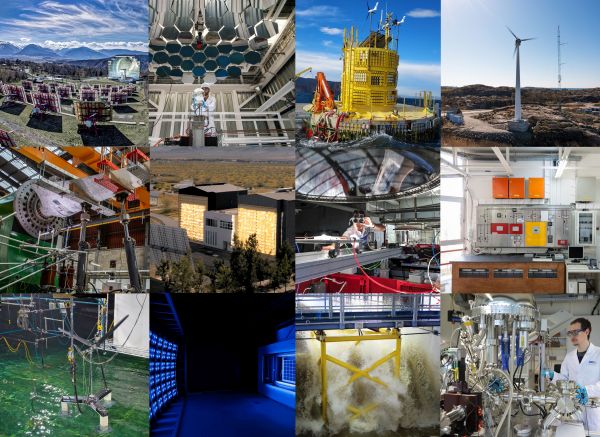
KIT-Coordinated EU Project Aims to Foster Networking and Advancement Across All Renewable Energy Technologies
The EU is aiming for climate neutrality by 2050. The RISEnergy project (stands for: Research Infrastructure Services for Renewable Energy ) is intended to accelerate the development of innovations for renewable energies until they are brought to market. One focus of the project is to make it easier for researchers and companies to access research infrastructures in European and non-European countries. The project, led by the Karlsruhe Institute of Technology (KIT), starts on March 1, 2024. The European Commission is financing RISEnergy with around 14.5 million euros for four and a half years.
“RISEnergy is creating a European ecosystem that covers all fields of renewable energy technologies,” explains Dr. Olga Sumińska-Ebersoldt, research associate at the Helmholtz Institute Ulm (HIU), founded by KIT in cooperation with the University of Ulm, and operational co-project manager of RISEnergy. “We want to promote the development of promising technologies from the laboratory level to industrial maturity on a large scale.” Although there have been joint research infrastructure projects for certain technologies to date, RISEnergy is the first project of comparable size in Europe to cover all areas of renewable energy technologies: photovoltaics , concentrated solar energy, hydrogen, biofuels, wind energy and wave and tidal energy, as well as topics such as integrated grids, energy storage, materials research, information and communication technologies.
Institutions from 22 countries involved
RISEnergy brings together 69 technology institutes, universities and industrial partners from 22 countries in a consortium. They contribute, for example, with infrastructure and specialist knowledge or organizational support.
The core of the network is, among other things, the European Energy Research Alliance EERA (stands for: European Energy Research Alliance ). EERA provides world-leading expertise through 18 so-called Joint Programs. “In order to include all important players, we asked the EERA Joint Programs to suggest the most important research infrastructures and experts for RISEnergy,” says Dr. Myriam E. Gil Bardají, research associate at HIU, coordinator of the EERA Joint Program on Energy Storage and also operational co-project manager of RISEnergy. The participation of organizations from the USA, Canada and Japan ensures the connection to innovations outside Europe.
Researchers can apply
As part of RISEnergy, 84 research infrastructures from 19 European countries as well as the USA, Canada and Japan are opening their facilities to external researchers and developers from companies. They can apply for use. A committee of experts decides on the award. RISEnergy covers the operating costs of the research infrastructure as well as travel and accommodation costs. The majority of the project budget is earmarked for this purpose.
The offer is expressly aimed at small and medium-sized companies. Uncomplicated access to large-scale research infrastructures is intended to support their innovation development. “We offer free use of laboratories. Researchers and experts from companies can travel, exchange ideas and carry out experiments,” says Sumińska-Ebersoldt.

CNRS, PSA, TECNALIA, Chalmers University, Edinburgh University,
ICCS, MARIN, IMEC, University of Hannover, KIT. (Assembly: KIT)
Networking, exchange and communication
“When it comes to renewable energies, we always talk about combinations of technologies,” says Dr. Peter Holtappels, group leader at the Institute for Microprocess Engineering at KIT and scientific coordinator at RISEnergy. It is therefore important that experts from different subject areas understand each other. “Anyone who builds energy storage or works with photovoltaics or wind and waves usually operates in their own community. We want to bring these people together by strengthening exchange and interdisciplinary communication.” Workshops and consulting services are planned on overarching topics such as life cycle analyzes as well as projects for the standardization of terminology and data processing. “The focus is also on digital tools for the energy transition: artificial intelligence will help to optimize the properties of materials and devices or to replace critical materials in the supply chains,” says Dr. Holger Ihssen from the Brussels office of the Helmholtz Association, which helped found the new research consortium.
It is also the task of the project team to evaluate which funding measures make sense. In addition, there is the development of roadmaps for political decision-makers.
